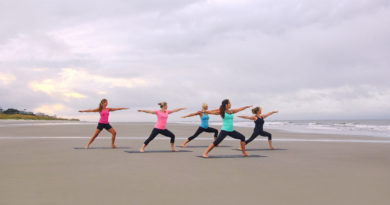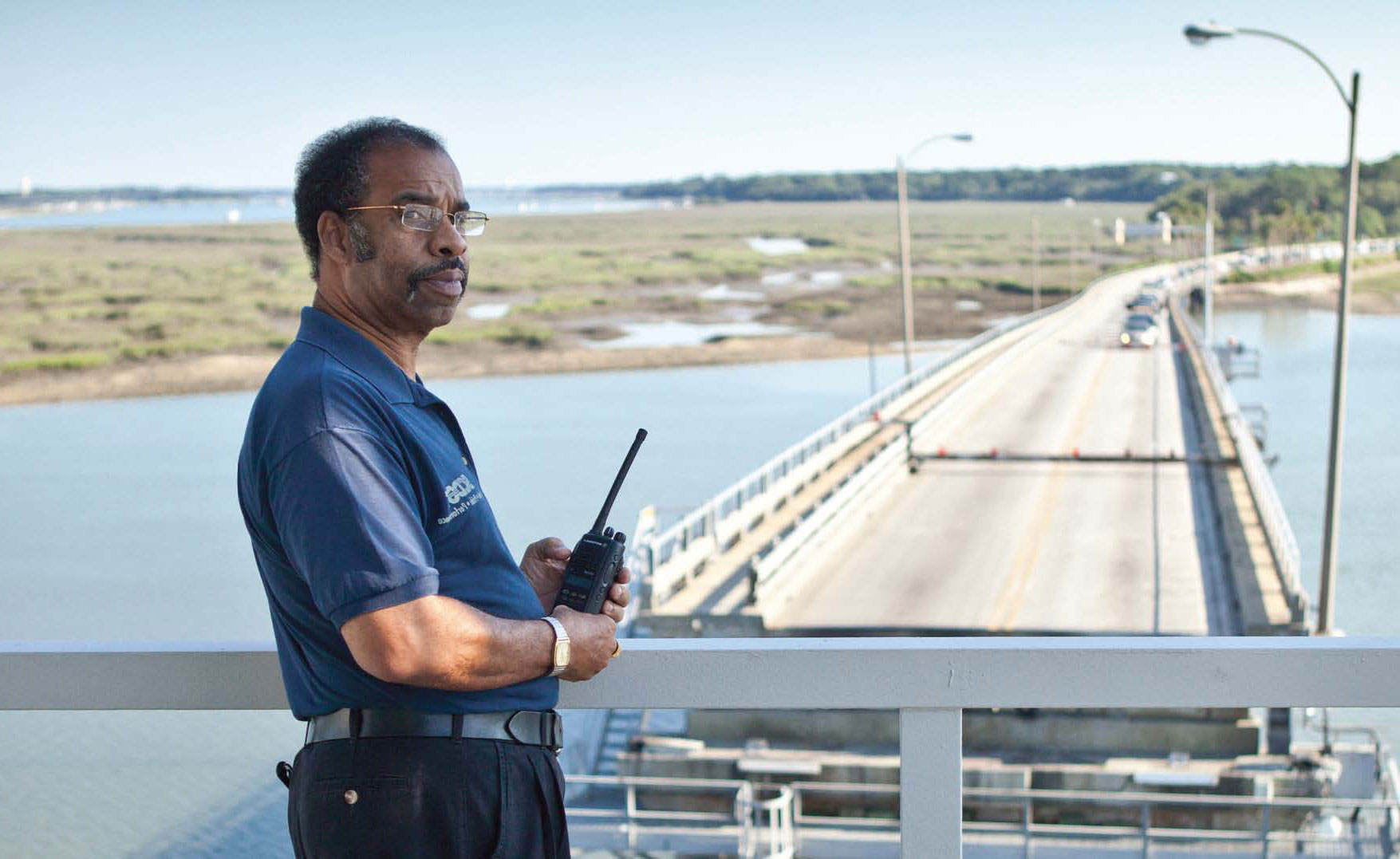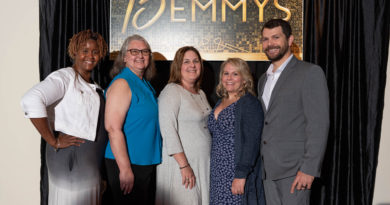Preservation, Advocacy and Education
Story By: Cindy Reid
Photography By: Susan DeLoach
Historic Beaufort Foundation
The mission of Historic Beaufort Foundation is to support the preservation, protection and presentation of sites and artifacts of historic, architectural and cultural interest throughout Beaufort County, South Carolina.
National Historic Landmark District
The Beaufort historic district encompasses five neighborhoods, 304 contiguous acres, and almost 500 historic structures spanning three centuries of architecture. It was designated a “National Historic Landmark District” by National Park Service in 1968, which signifies a higher level of historic importance. Other areas that are also Landmark Districts include College of Charleston and the Penn Center but the Beaufort district is the largest in South Carolina. The five neighborhoods included in the designation are: the Point, the Old Commons, the Northwest Quadrant, the Bluff and Downtown.
Historic Beaufort Foundation has been at the front line of the efforts that have made Beaufort such an outstanding preservation success story. Maxine Lutz is the Executive Director, a position she has held since 2013, although she was executive assistant for the prior 18 years. Maxine clearly is passionate about Historic Beaufort Foundation (HBF) and the important work it has been doing for over fifty years. She says, “It started in the 1940s under a different name, and Historic Beaufort Foundation really organized in 1965. Initial forays into preservation were focused on saving the big houses In the 40s, the Verdier House was slated to be demolished and replaced by a gas station. A group of early preservationists saved it. By the 1960s other historic buildings were threatened, including the Anchorage, also for the same purpose- another gas station. HBF formed and saved it too. Next, the Cuthbert House was slated to be a parking lot and it became another house saved by HBF. You can see that early on it was a big struggle against the marketplace. Over the years HBF has been involved with scores of such projects and we continue that work today.”
Saving the Past
Maxine says, “At HBF we have three equally important missions: Preservation, Advocacy and Education.”
“Preservation of course includes the restoration and stabilization of historic buildings. But it also includes the preservation of landscapes. About 20 years ago we realized the small cottages were being left to rot away. We called it ‘demolition by neglect’. And so that is where our focus is now, mostly in the Northwest Quadrant. For example we stabilized a grocery store, which was then bought and turned into two apartments. The Frogmore Lodge building was stabilized last year and we have sold it to its current owners, who will be restoring it as a single family residence. This element of preservation is a large part of what we do.”
“We advocate for historic buildings. We have a representative on the City’s Historic District Review Board. We work together to come up with the best solutions for owners of historic structures who want to make changes, allowing for modern uses but honoring the historic architecture. We look to have changes that are ‘sympathetic’ to the historic nature of the building. We work with the city looking at new construction projects, as well as analyzing issues like the new short-term rental ordinance and the proposed new zoning code. Our question is always, ‘How is this going to affect the integrity of the historic district?’ because that is always our goal. Even something such as new ordinances about solar panels and wind turbines are important, if they can be seen from the historic district.”
“Education is such an important part of what we do here. We have operated the Verdier House since the 1970’s as an educational venue presenting an example of how antebellum planters lived. However over time, traditional house museums have become less compelling to the public nationwide. So we decided to focus additionally on using the Verdier House as an educational tool, hosting lectures and exhibits, making the house attractive to a wider audience, not just to those of us who love old houses. Verdier House Director Jacque Wedler and her docent team manage hourly house tours seven days a week, but in the last two-to-three years we have developed specific grade-level educational programs for students. Sue Stanny, Executive Assistant and Educational Coordinator, is in charge of the educational component. Sue can gear our programs for visiting school groups to specific topics and grade levels. Last summer we started a “Fun with History Day Camp” in the house for children 8-to-11, which was very popular and we are repeating it again this year. Seeing the children engage is wonderful – it is really fun to see their eyes wide open!”
Maxine continued, “I have to add that a large part of our educational programming for adults is conducted by Events Coordinator Isabella Reeves. Not only has Isabella brought in exquisite exhibits with associated lectures and field trips, she has conducted the Fall Festival of Houses & Gardens, the Spring Architects’ Tour and countless Connoisseur Trips, all with an educational focus and a goal to promote historic preservation.
Going Forward
As to attitudes about historic preservation, Maxine says, “When preservation became a movement in the 1960s, it was a battle to change some minds. There were those who saw it as standing in the way of progress and modern life. We were often seen as ‘the party of no,’ but in reality we are ‘the party of yes, but’ … but let us help you find solutions that protect your home’s historic architecture and still allow for modern living.’ That approach has worked very well and we hope attitudes have changed. We invite homeowners, architects and contractors to talk with us. The City of Beaufort too has become more receptive to preservation because it has been shown that it is a large part of what draws visitors and new residents here. And like HBF, the historic district review board is working to find solutions to preservation issues.”
Does she feel like a history detective? She says, “ Oh yes, and that really is the fun part. We call ourselves ‘History Nerds’! We have file cabinets full of photographs but we are always searching for more, particularly of buildings. And everything we do in preservation is always a race against time. “
When asked about her personal involvement in Beaufort and its history Maxine says, “When I came here I realized this is the place they have been talking about, from the Civil War. While I grew up in the South, my hometown didn’t exist until 1915. This is where the re-write of Southern life occurred. The culture, the population, the economy all changed overnight when the Union Army came and the planters fled. It was a wholesale removal of everything ‘that was’, which is historically amazing, and the town became a completely different town after the war. There is no end of fascinating stories about Beaufort history.”
One such story directly relates to HBF. Francis Griswold, the author of the Beaufort classic “A Sea Island Lady” (published in 1939) moved to California after living and writing in Beaufort and made wise investments in the Santa Barbara real estate market. He left the HBF a generous bequest in his will that continues to provide funding for the organization today. A case of the past helping save the present.
HBF Membership
HBF is a private, independent not-for-profit 501(c)(3) membership organization, open to anyone with an interest in historic preservation. Membership helps fund the HBF activities and projects and provides an array of benefits to the member. The HBF also has two big fundraisers, the Lafayette Soiree (held in April) and the Fall Festival of Houses and Gardens (October 27, 28, 29 2017). The HBF also has items for sale , including the Historic Beaufort Foundation Guide to Historic Homes and Places, the official guide to the historic houses, churches and other points of interest of Beaufort ,South Carolina.
John Mark Verdier House Museum
Permanent exhibits include: Diorama of 1863 Bay Street Exhibit, Robert Smalls exhibit, Civil War photos by Samuel Cooley and the Beaufort Volunteer Artillery exhibit. Hours of Operation : Monday–Saturday. Docent-guided tours every hour on the half hour from 10:30 AM until 3:30 PM. Closed Sundays and Holidays. Phone: 843-379-6335. 801 Bay Street, Beaufort.
For further information visit their website http://www.historicbeaufort.




